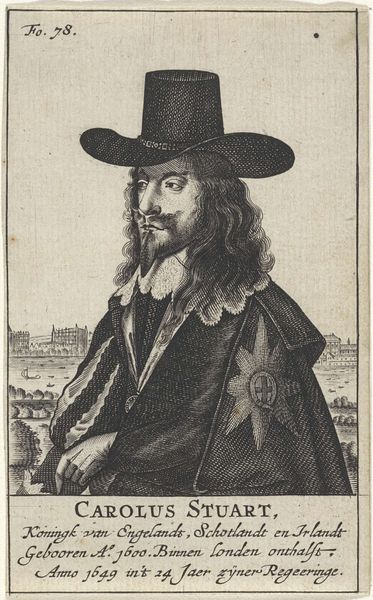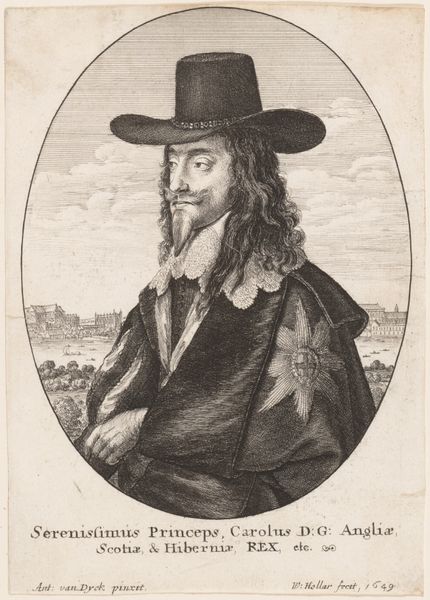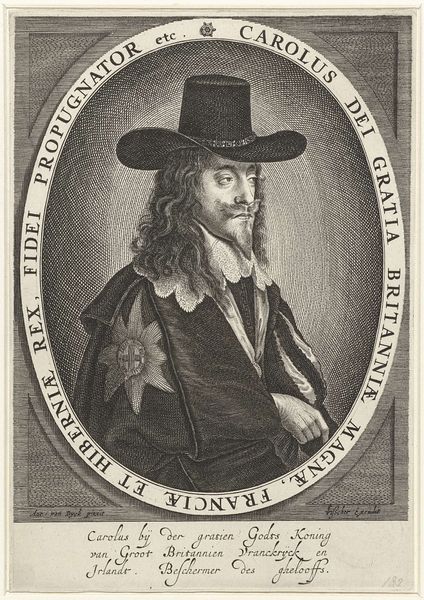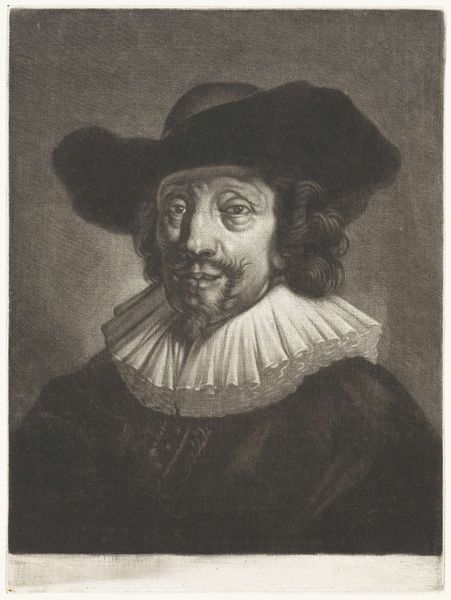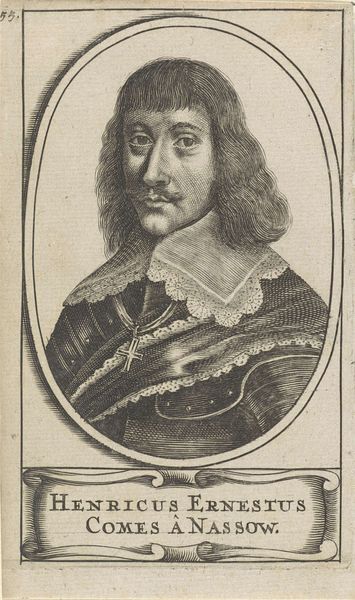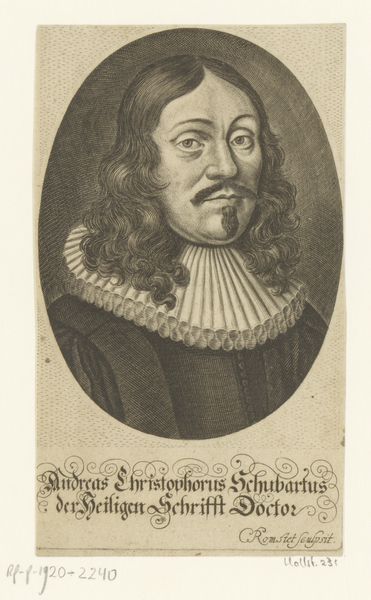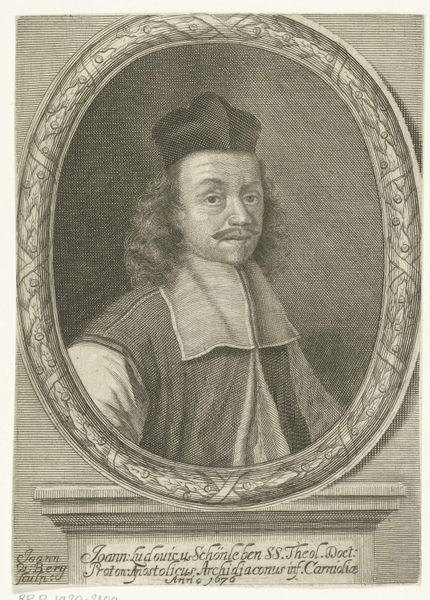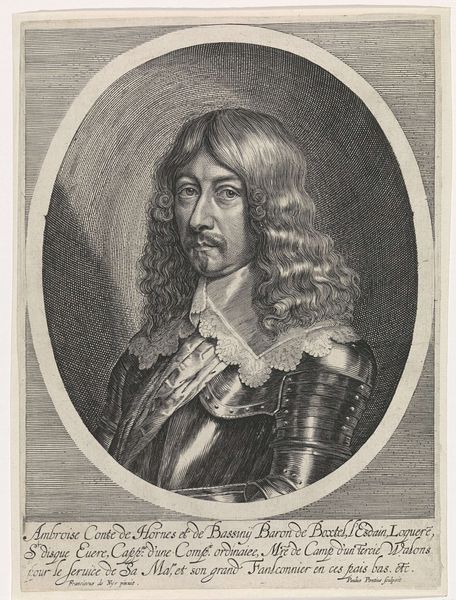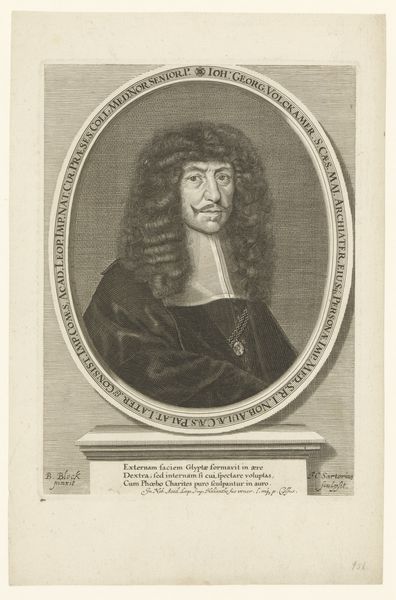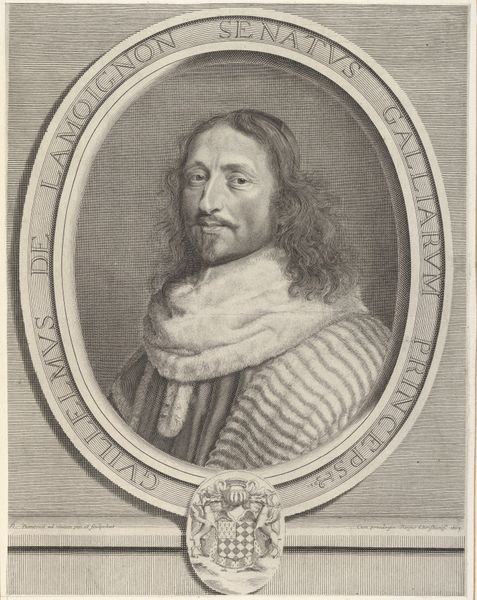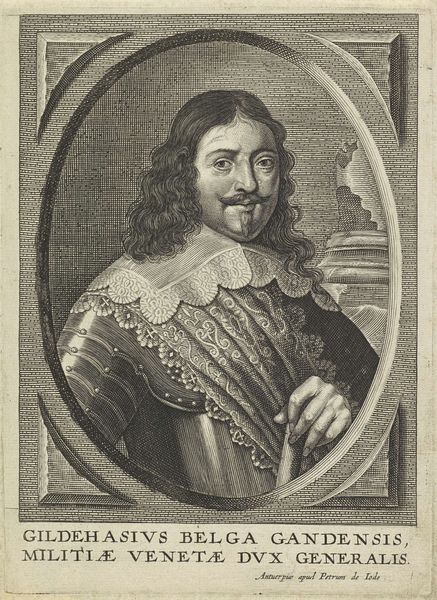
print, engraving
#
portrait
#
baroque
# print
#
history-painting
#
engraving
Dimensions: height 111 mm, width 66 mm
Copyright: Rijks Museum: Open Domain
Curator: This is a print titled "Portret van Karel I, koning van Engeland," or "Portrait of Charles I, King of England," dating roughly from 1649 to 1727. Editor: Oh, he looks rather severe, doesn't he? A king with a very long face, literally and figuratively. There’s a solemn rigidity to the engraving that amplifies that impression, doesn't it? Curator: Absolutely. The anonymous artist chose engraving, a printmaking technique involving incising lines into a metal plate. Think about the labour involved, each line meticulously carved, to produce multiple images. Consider too, how that mechanical reproducibility made it easier to disseminate his image and therefore, his power. Editor: It does make you wonder about the image’s original intention and intended audience. There's a formality, of course, fitting a king, but almost a… mournful quality? Maybe that's because knowing his fate, a king dethroned and executed in 1649 adds a tragic layer. Curator: Indeed. The very date range, starting in the year of his execution, compels one to speculate that this particular depiction gained in popularity or was somehow revived later in the 17th century as a historical artefact or political emblem after his beheading. These aren't neutral representations but highly contested artifacts. It might not be an accident that we don't know who made it, given how sensitive such an image could be. Editor: And you can imagine it pinned up on a wall somewhere—the very texture of the engraving adding to the almost gothic melodrama of the piece. He looks haunted. Do you think there's a glorification there? Curator: The inscription definitely hints at that with the words "Gloriosa Innocentia, mortem oppetiit XXX January 1649” suggesting a sort of martyrdom. But looking closer, it also points to a broader understanding and interpretation of materials—the deliberate choice of an inexpensive printed image for distribution hints at an intention to manufacture sentiment and belief widely rather than to appeal to the richer classes. Editor: Food for thought indeed. Curator: And food for future study.
Comments
No comments
Be the first to comment and join the conversation on the ultimate creative platform.
